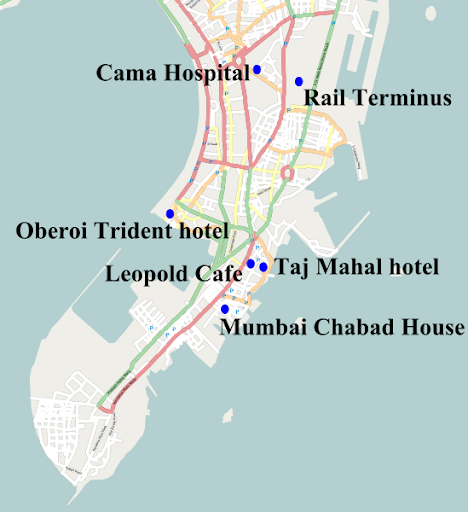26/11 Mumbai Attacks And The Role Of The Media – Analysis
By B. Raman
In its judgement of August 29, 2012, upholding the death sentence passed on Ajmal Kasab, the sole surviving perpetrator of the terrorist strikes carried out by Pakistan’s Lashkar-e-Toiba (LET) in Mumbai from November 26 to 29, 2008, the Supreme Court has made some observations on the role of the media, particularly the Indian TV channels, in covering the terrorist strikes.
These observations have been made as Obiter. The legal dictionary defines an obiter as “Words of an opinion entirely unnecessary for the decision of the case. A remark made or opinion expressed by a judge in a decision upon a cause, “by the way”, that is, incidentally or collaterally, and not directly upon the question before the court or upon a point not necessarily involved in the determination of the cause, or introduced by way of illustration, or analogy or argument. Such are not binding as precedent.”

Thus, the observations made by the court are not a pronouncement of a judgement or legal determination on the possible responsibility of the media. Those are the passing observations made by the court during its review of some visual/audio recordings seen by it while examining the appeal of Kasab against the death sentence.
It is evident that the observations relate to the coverage of the Indian TV channels as a whole. They do not relate to the coverage of any particular channel. It would, therefore, be unfair to blame any individual TV channel as referred to by the court. It has not made any individual reference.
However, a perusal of the court’s observations would show that it has been strongly critical of the TV coverage as a whole. Even earlier, the criticism had been voiced by many, including this writer, that due care and caution was not taken by the TV channels in their live coverage, thereby enabling the masterminds of the LET co-ordinating the terrorist strikes from their control room in Karachi, to have some idea of the deployments and planned actions by the security forces.
Normally, in Western countries even an obiter is used by the relatives of the victims to file a suit for damages against the media found wanting in the observance of care and caution, provided the obiter is with reference to the role of a particular channel.
As a first step, the relatives of the victims in Mumbai should examine the transcripts cited by the court in order to see whether any of the clips from the transcripts could be linked to the telecasts of any particular channel. Only if they are able to do so, they may be able to consider jointly with the relatives of all victims the possibility of a suit for damages against the particular channel identified as the telecaster of the clips cited by the court. This will be a pains-taking process which may or may not produce satisfactory results.
Simultaneously, it is important for a high-power task force of TV professionals to examine the obiter along with the clips cited in it and make suitable recommendations regarding the live coverage of terrorist strikes in future.
Most of the terrorist strikes in India are in the form of explosions. The question of live coverage of such incidents does not arise. There have been instances of live coverage of exchanges of fire between the security forces and the terrorists in the past too. Two examples that come to mind are the terrorist strike at Charar-e-Sharif in Jammu and Kashmir in 1995 and the joint action by the Punjab Police and the National Security Guards in 1988 against some Khalistani terriorists who had taken shelter in the Golden Temple in Amritsar. In those days, there were no private TV channels and hence the police did not face any problem. The print media co-operated with the police by avoiding any sensational coverage.
The 26/11 strikes were the first commando-style terrorist attacks in Indian territory outside J&K. The plethora of private TV channels which had come into existence by then added to the operational difficulties of the security forces due to the non-observance of due care and caution in their live coverage.
In addition to the initiation of precautionary measures by the channels themselves, it would also be useful for the National Police Academy in Hyderabad to hold periodic seminars with the participation of journalists and police officers on the TV coverage of terrorist attacks. Some case studies could also be discussed during these seminars such as the difficulties faced by the German security forces in 1972 during the Black September terrorist strike on Israeli athletes at the Munich Olympics. Unwise coverage by private TV channels allegedly added to the difficulties of the local police.
